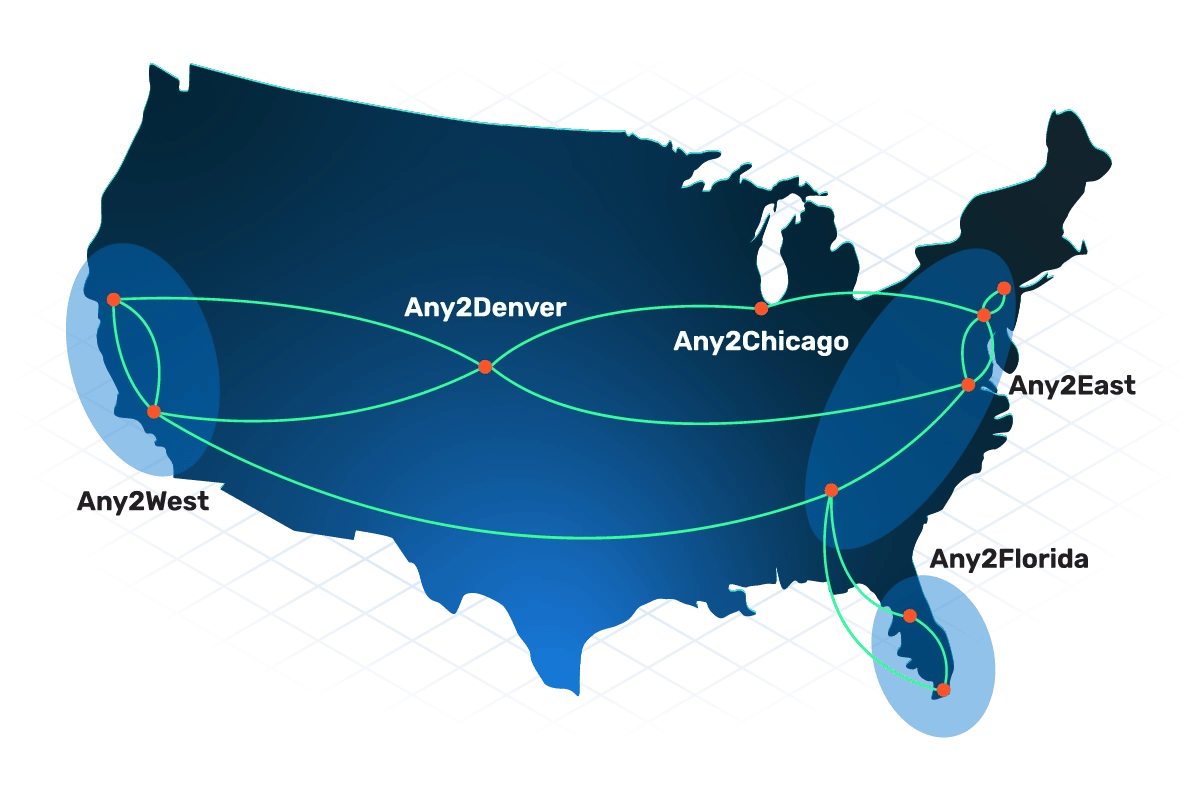Any2Exchange
Connect to Internet Exchange Points Across the United States
Direct Data Flows Improve Performance, Reduce Latency
CoreSite owns and operates the Any2Exchange for Internet peering. With 400+ members – over 250 are connected in California – Any2Exchange is the second largest internet exchange in the United States and the largest internet exchange on the West Coast.
Odds are, there's an exchange near you. The CoreSite Boston, New York and Northern Virginia markets form the Any2East® exchange. The Silicon Valley and Los Angeles markets form the Any2West® exchange. CoreSite has the middle and south covered as well, with Any2Chicago® and Any2Florida®.

Exchange Data Directly, Cost-Effectively and Reliably
Any2Exchange switches can be accessed from all CoreSite data centers.ENTER NEW MARKETS, REACH NEW CUSTOMERS
CoreSite's peering platform for networks enables interconnection all with other participating Any2 members.
Reduce Complexity, Manage Efficiently
The Any2Easy route server option on the Any2Exchange enables you to peer with other participants on Any2Easy – in a single Border Gateway Protocol (BGP) session.
Single sessions require less configuration, maintenance and administrative support. Also, single sessions reduce router flapping, creating more stability, and they apply policies and configurations uniformly across all routes.
VIEW ANY2EXCHANGE PARTICIPANTS
Get More Information Related to the Any2Exchange
National Reach, Seamless Peering
Online Gaming Platform Creates Enhanced Customer Experience
What Is the CoreSite Any2Exchange?
.png?width=300&name=IMAGE%20(1).png)










